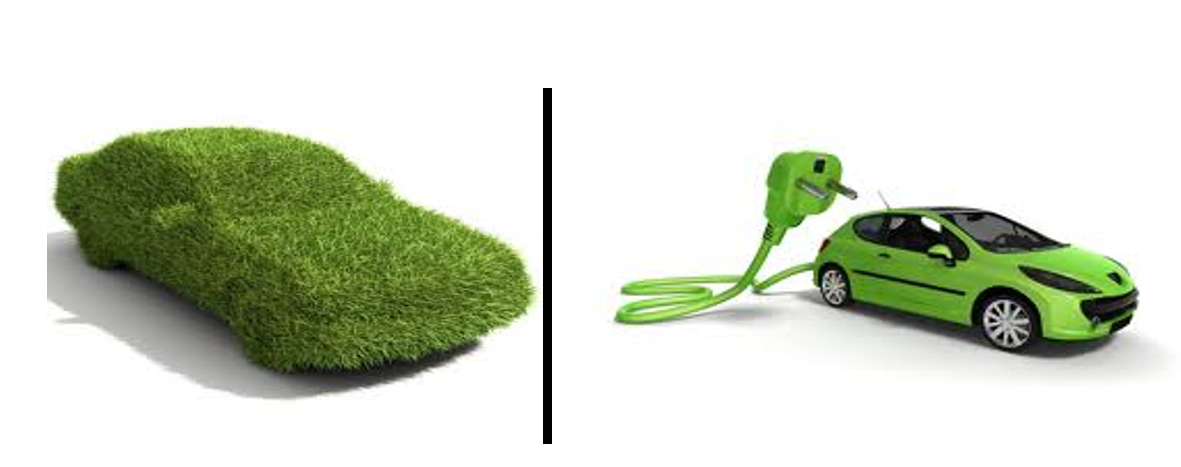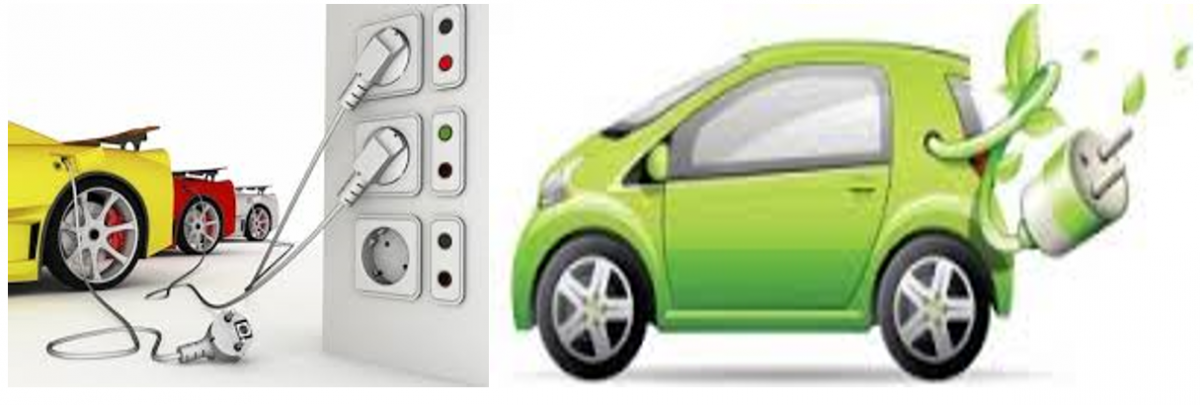Introduction
It is beyond doubt to the ordinary public that global climate is drastically shifting from bad to worse. According to Butler (2009, p. 4), this menace is not only acknowledged by the common citizens, but also by the authorities who should bring to an end the nuisance. In this regard, several conferences, summits, and seminars have been organised to fight the threat. Likewise, environmental scholars struggle every day to find a way of meeting the needs of the human beings in the current generation without compromising the ability of the future generation to do the same (Moreli 2011, p. 24). To achieve a balance, resilience, and interconnectedness in the system, Butler (2009, p. 8) indicates that environmental scholars have to come up with a few collections of guiding principles to assist the contemporary society.

When analysing the causes of climate change, Robinson (2004, p. 372) asserts that one of the key factors that blow up this crisis is transport. According to the statistic from Butler (2009, p. 13), emission from the transport sector is the fastest rising cause of greenhouse gases at the present. Similarly, Moreli (2011, p. 24) holds that, of the entire pollution-generating sectors, the transport sector indicates an extreme rise in greenhouse gasses emission in the near future. The ever-ballooning global human population demanding for an increased transport means as evidenced in numerous studies prompts this outcome.
These circumstances, as Butler (2009, p. 17) asserts, shows the seriousness of the need to tackle this issue. As documented by Ward-Jones (2008, p. 285), there can be several approaches to protect the environment. For example, introduction of environmentally friendly cars can help in combating the menace.
Environmentally friendly cars
At the time eco-friendly cars never existed, motorists were perfectly satisfied to drive heavy guzzler vehicles that emitted large amount of unhealthy gasses into the ecosystem. All the same, a few or none of these car users ever knew the damage they were causing both to themselves, to the entire humankind, as well as to the environment. Nevertheless, when these environmentally friendly cars were finally introduced, the many benefits that came along with this new technology were quickly be acknowledged as the press persistently discussed them, thus creating awareness to the public.
According to Pischinger, Schonfelder and Ogrzewalla (2006, p. 422), environmentally friendly cars play a significant role in combating pollution. The low carbon vehicles technologies and fuels gives the vehicle manufacturers, the governing authorities and those supplying fuel with one of the major way of reducing the carbon dioxide emission from the road transport sector (Robinson 2004, p. 373). However, as Ward-Jones (2008, p. 284) notes, the existing situation is highly complex, where there are several factors that affect marketing of these low carbon vehicles technologies. Due to the complexity that arises, the sales of these low carbon vehicle technologies as alternative fuelled vehicle have remained low.

How to prevent the pollution through environmentally friendly cars
In a bid to achieve a sustainable environment, the type of fuel used determines solution for pollution solution to the environment. Some types of fuel, as Hawkes (2010, p. 5978) notes, are more efficient in energy combustion than others, where some types of fuels emits less gasses, on the other hand, some emits excessively large volume of gas. Since different car engines are designed to guzzle different types of fuel, the type of fuel then determines the type of car to use. Therefore, environmentally friendly cars are divided based on fuel they consume; some of the division are discussed below.
Plug-in Hybrid Cars
Plug-in hybrid cars enable users to drive cars off grid electricity. As a result, they are able to double or even triple the distance that conventional cars cover. For instance, pure electric vehicles have a potential range less than 300-miles, but plug-in hybrid cars surpass the distance using the electric motors only. Even though other scholars argue that plug-in hybrid cars escalates environmental pollution indirectly by using electricity that is produced from coal, the technology, to say the truth, has reduced carbon dioxide and other harmful gases into the atmosphere (Pischinger 2004, p. 10). With less emission of greenhouse gases, the technology helps in minimising environmental degradation. Since instances of acidic rain are minimal with the application of the technology, global warming menace is also prevented.
Global warming is a sign of climate change in a region, and with the reduction in carbon footprint, the technology helps in conserving the environment for both fauna and flora. The reduction in emission of greenhouse gases helps to decrease and offset carbon footprint. Apart from creating acidic rains, the gases can destroy the ozone layer, thus allowing ultra-violet rays to reach the ground. Even though the plug-in hybrids reduce environmental emissions, the technology can further conserve the environment by using electricity from renewable sources of energy, such as wind, geothermal, and solar.

Diesel verses Petrol
As compared to automobile engines run by petrol, these engines produce less carbon dioxide for every unit of fuel consumed. However, as Hawkes (2010, p. 5980) notes, diesel produces a large amount of nitrogen oxide, and diesel produces particulate matter of diesel known as the black smoke. Therefore, for environmental sustainability, environmentally friendly cars that uses diesel have filters for the diesel particulate. Up until now, since diesel combustion releases larger amount of nitrogen oxide as compared to the petrol run engines, for sustainable environment, until the solution for emission of nitrogen oxide is found, it will be advisable to use petrol run engines as a precaution to sustainable environment.
Biofuels
According to Robinson (2004, p. 376), this alternative fuel when compared to non-renewable fossil fuels such as diesel or petrol as evidence suggest is more environmentally friendly hence more sustainable. Since biofuels originate from renewable sources such as crops, as long as photosynthesis takes place, their source cannot be exhausted, thus making it sustainable for a long time usage. Moreover, biofuel in comparison to the fossil fuels produces a lesser greenhouse gas hence limited pollution to the environment. Hence, in a bid to conserve a sustainable environment, evidence from the analysis supports the use of cars that consumes biofuel rather than fossil fuels.
Compressed natural gas
This gas, as Pischinger (2004, p. 8) indicates, is well thought-out as a cleaner form of vehicle fuel, as compared to fossil fuels, and for that considered possible solution to air pollution by vehicles. Since, this gas when used produces a smaller amount car exhaust pollutants as compared to the fossil fuels, it is arguably a better alternative form of fuel for environmentally friendly cars, for sustainable environment. However note that, compressed natural gas call for a larger storage capacity, which has already seen an improvement in the structural design for environmentally friendly cars. Moreover, development of capacity to harvest this gas from the various sources for car use in itself helps to reduce air pollution.
Hydrogen fuel cell
In this circumstance, the vehicles emit purely water, which rarely pollutes the environment (Zachariadis 2006, p. 1777).

Batteries
Whenever batteries are used as energy source for vehicles such as electric cars, the cars emits close to not any pollution. Therefore, the use of such environmentally friendly cars is the best solution to the environmental pollution menace (Pischinger, Schonfelder and Ogrzewalla 2006, p. 423). However, as noted the method is not a full solution to the problem since when the batteries run off power, they are recharged from sources that might be pollutant to the environment. Moreover, the environment cannot sustain the batteries used to run these since they cars are not recyclable for this they demand a constant production, which depletes the raw materials used.
Governments’ Interventions to reduce Environmental pollution
Globally, it is evidenced that gas emission by vehicles are major sources of air pollution mostly in the urban centres. Due to the crowded population in the urban centres, with ever-busy traffic that can trap pollutants along the streets, the effect as noted can raise the temperature of that particular city thereby causing a health risk to the residents. To fight this danger a government can utilise various methods, which are discussed below.
A comprehensive vehicle emission program
To cub the threat of global warming, a government in order to reduce vehicle emission can introduce initiatives such as initiate a more strict fuel and car emission standards to all motorists within the country. In addition, the government can encourage their citizens to adopt cleaner substitute diesel cars; this can include the use of liquefied petroleum gas for light buses and taxing (Ward-Jones 2008, p. 286). Lastly, to control gas emission, the government should encourage better vehicle maintenance and driving habits that are friendly to the environment (Ward-Jones 2008, p. 288). These can help reduce the number of smoky vehicles that pollutes the environment more so in the urban centres where vehicle congestion is high.
Tax incentives for environmentally friendly cars
When the government is interested in reducing the gas emission by vehicles in order to achieve a sustainable environment, they can initiate incentives to environmentally friendly vehicles. With this, new customers who intend to buy vehicles can go looking specifically for these environmentally friendly vehicles. The incentives can be in terms of concession of tax; such offers can encourage the citizen intending to purchase personal cars to choose specifically the eco-friendly vehicles (Butler 2009, p. 36). Likewise, with a reduction in a tax registration for environmentally friendly cars, taxi owners will be able to purchase these new vehicles (Ward-Jones 2008, p. 288)
Statutory ban against idling Motor vehicle engines
In this respect, since allowing engines to run whether idling or in use emits gasses, thus causing air pollution, an idling running engine is unnecessarily wanted. Such engines do not only cause air pollution, but also cause unnecessary heat, loud noise, and waste fuels, thus enhancing the global warming threat (Butler 2009, 49). In order to tackle this trouble, a responsible government should introduce a high fixed penalty integrated either in the country’s constitution or in by-laws to such drivers. This, as argued can reduce the habit leaving the car engines idling, thereby reducing the gas emission to environment that affects the leads to climatic change (Butler 2009, p. 52).
Control programs for smoky vehicles and spotter training
Smoky vehicles, as Pischinger (2004, p. 14) notes, are a major contributor to global climatic change. Therefore, to reduce this, the responsible government should prohibit the use of such in both the urban and the rural transport sectors. To cub this the government should introduce laws that limits the smoke level of vehicles permitted to ply the country. In addition to this, to ensure that the law is wholly implemented, the government after making the law should train and employ staffs that will report vehicles that emits excess smokes that exceeds the limit designated. With this, vehicles found guilty can have their license cancelled hence help reduce the global effect on climate.
Encouraging use of green and low carbon transport technologies
A government that would wish to move its country to low carbon transport technology with the aim of reducing the global climatic warming should encourage green and innovative technology programs where the innovators can pioneer new vehicle types, machinery or equipment that are related to transport sector. In addition, the government can encourage the innovators to open up a new retrofit system that can result in sustainable better gas emission as compared to the existing machines in the transport industry (Butler 2009, p. 47). With this idea, innovators are well ready to come up with environmentally friendly machines that can be either hybrid cars or flex-flux vehicles.
As Moreli (2011, p. 28) notes, hybrids are car that use a smaller amount fuels by storing excess energy in a battery. In a case where there is congestion on the road and the vehicles are forced to move at a slower pace, these hybrid cars use electric motors other than the gasoline engine. While coastline, these hybrid cars run on electric motors again, thereby uses the stored energy from the wheel to charge the engine. These in summation, as evidence from empirical research recommend can help reducing gas emission, resulting in a reduction in global climatic change for sustainable environment.
Equally, flexible-fuel vehicle (FFV) are other environmentally friendly option that a government can utilise. As Zachariadis (2006, p. 1783) indicates, these vehicles can run off ordinary gas, and, at the same time, run on a mixture of ethanol and the regular gas. Even though it is indicated that FFV have poor fuel efficiency, the use of ethanol by the flex-fuel cars reduce dependency on petroleum, thus limiting gas emission.
Conclusion
In sum, from the analysis of various publications, the authors clearly indicate that environmental sustainability is a key factor to each individual. For a sustainable environment, however much that the governing bodies deserve to do, since the menace affects the common citizen too, the public has the sole responsibility to ensure that they create a favourable environment for themselves. In addition, since the transport sector is unanimously acknowledged as the greatest threat to environmental sustainability, the governing authorities besides creating and environmentally friendly cars should educate the public on their benefits. Moreover, the governing bodies should encourage innovation and investment in alternative environmentally friendly sources of fuel for sustainable environment.
References
Butler, B., P 2009, Ecological balance: The greater goal of the environmental manager, Rochester Institute of Technology, New York. Web.
Hawkes, A. D 2010, ‘Estimating marginal CO2 emissions rates for national electricity systems’, Journal on Energy Policy, vol. 38 no.10, pp. 5977-5987. Web.
Moreli, J 2011, ‘Environmental sustainability: A definition for environmental professionals’, Journal of Environmental Sustainability, vol. 1, no. 5, pp. 19-27. Web.
Pischinger, S 2004, ‘The future of vehicle propulsion: Combustion engines and alternatives’, Topics in Catalysis, vol. 30, no. 4, pp. 5-16. Web.
Pischinger, S., Schonfelder, C and Ogrzewalla, H 2006, ‘Analysis of dynamic requirements for fuel cell systems for vehicle applications’, Journal of Power Sources, vol. 154, no. 2, pp. 420-427. Web.
Robinson, J 2004, ‘Squaring the Circle? Some thoughts on the idea of sustainable development’, Ecological Economics, vol. 48, no. 12, pp. 369-384. Web.
Ward-Jones, R. S 2008, ‘Environmentally friendly cars: Promoting and increasing their use in the UK’, Earth & E-environment, vol. 3, no. 7, pp. 282-317. Web.
Zachariadis, T 2006, ‘On the baseline evolution of automobile fuel economy in Europe’, Journal on Energy Policy, Vol. 34, no. 9, pp. 1773-1785. Web.